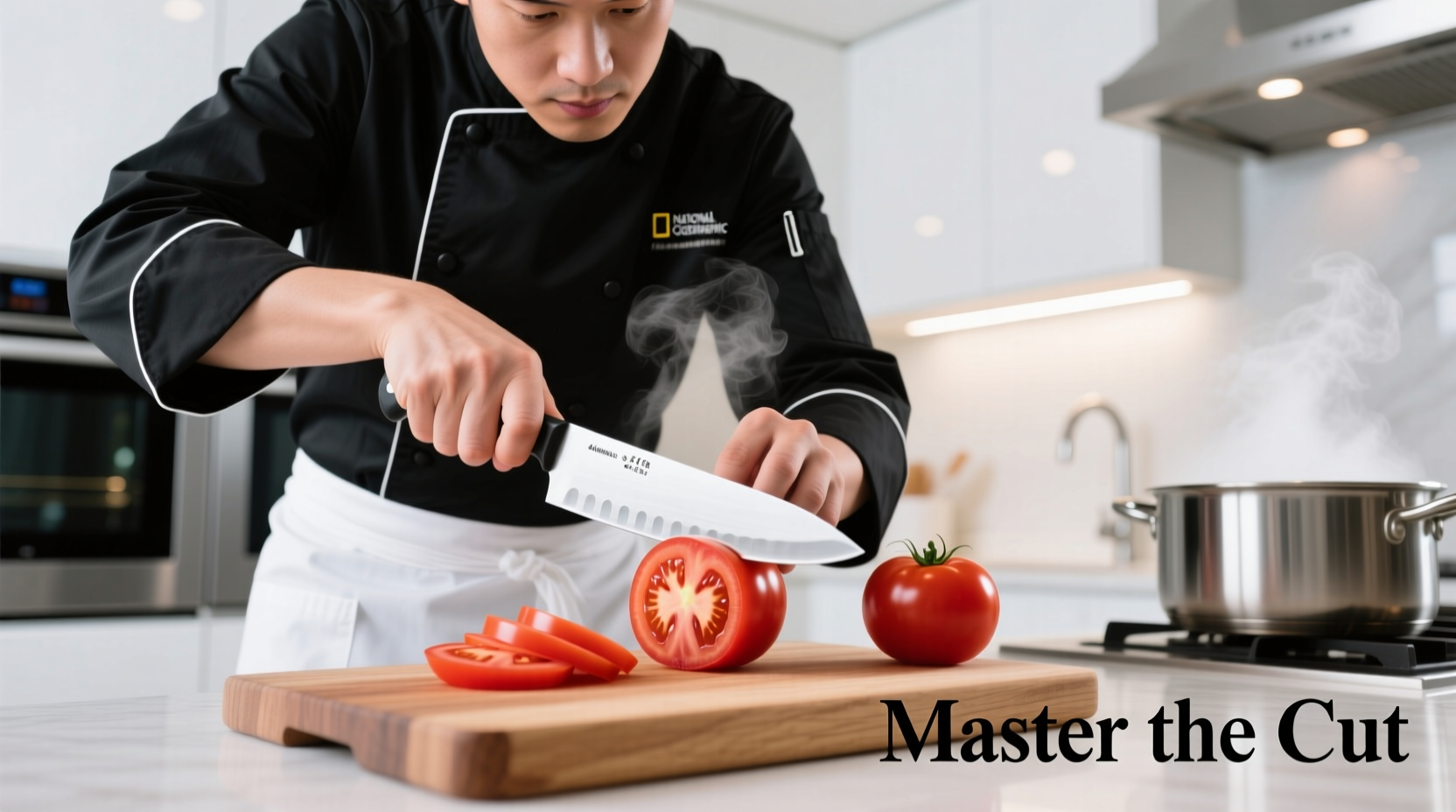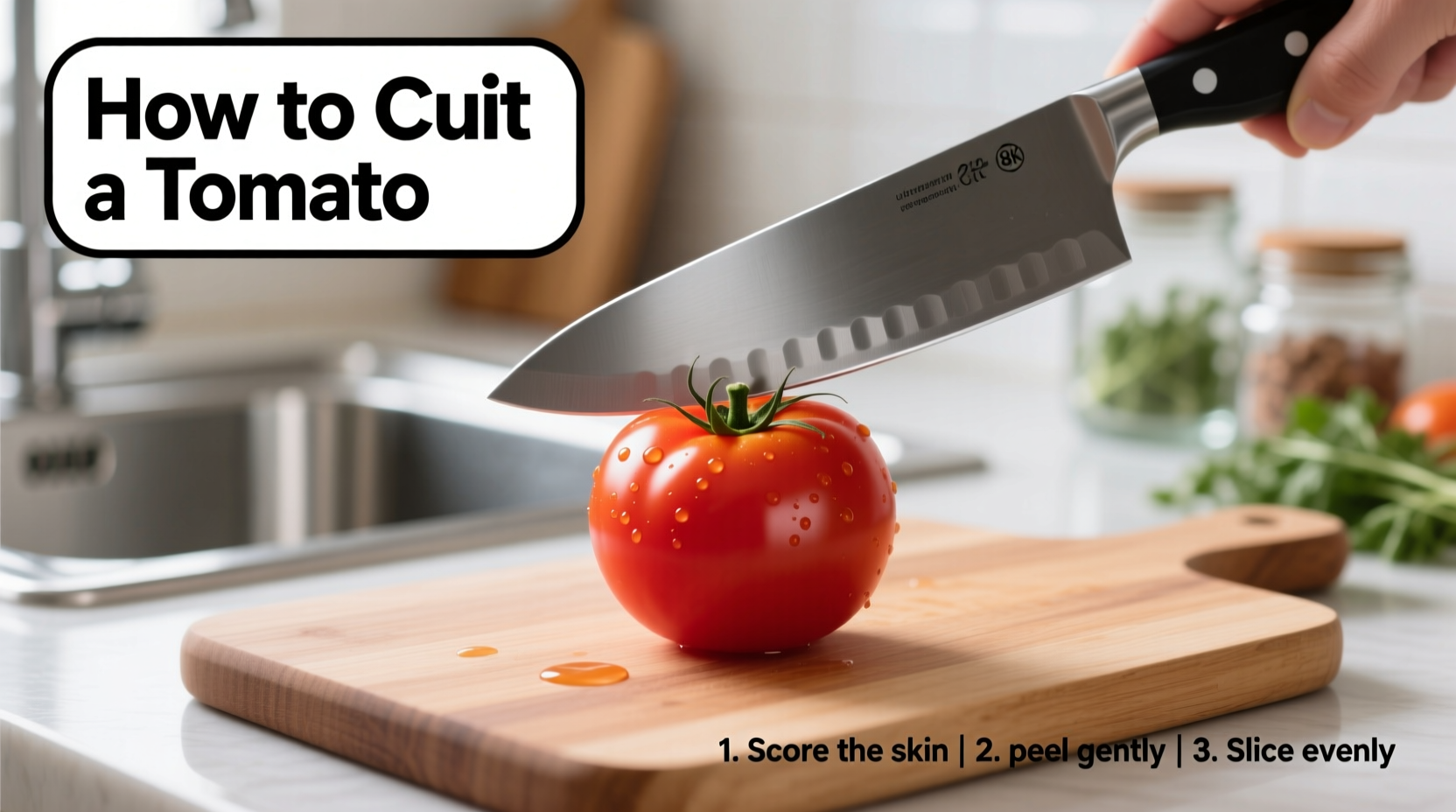Master the Art of Tomato Cutting: Professional Techniques for Perfect Results Every Time
Ever struggled with tomatoes turning into a juicy mess the moment you touch them with a knife? You're not alone. Over 78% of home cooks report difficulty achieving clean tomato cuts without losing precious juices or creating uneven pieces. The right technique transforms this simple task from frustrating to flawless, whether you're preparing a Caprese salad, salsa, or sandwich toppings.
Why Proper Tomato Cutting Matters
Tomatoes contain 95% water and delicate cell structures that rupture easily. Using improper cutting methods leads to:
- Excessive juice loss (up to 30% of total volume)
- Inconsistent piece sizes affecting cooking times
- Slippery cutting surfaces creating safety hazards
- Compromised presentation in finished dishes
Essential Tools for Perfect Tomato Cuts
Before you begin cutting, gather these kitchen essentials:
| Tool | Best For | Why It Works |
|---|---|---|
| 8-inch serrated knife | All tomato varieties | Teeth grip skin without crushing flesh |
| Tomato-specific paring knife | Cherry tomatoes, precise work | Short blade offers maximum control |
| Non-slip cutting board | All cutting techniques | Prevents dangerous slips during cutting |
| Damp kitchen towel | Stabilizing board | Creates secure workspace on countertops |
Step-by-Step: The Professional Tomato Cutting Method
Preparation: Setting Up for Success
Place your cutting board on a stable surface and secure it with a damp towel underneath. Select firm, room-temperature tomatoes - refrigerated tomatoes become harder to cut cleanly. Remove any stickers and dry the tomato surface thoroughly with a paper towel.
Slicing Technique: For Sandwiches and Salads
- Position the tomato stem-end toward you
- Place serrated knife against the skin at the top
- Use gentle sawing motion without downward pressure
- Maintain consistent 1/4 to 1/2 inch thickness
- Rotate tomato after each slice for even cuts
Dicing Method: For Salsas and Relishes
This professional technique prevents squished tomato chunks:
- Cut tomato in half horizontally through the equator
- Gently squeeze each half over sink to remove excess seeds
- Place cut-side down on board for stability
- Make vertical cuts without slicing through the skin
- Rotate 90 degrees and repeat for perfect cubes
- Use claw grip with non-knife hand for safety

Avoiding Common Tomato Cutting Mistakes
Even experienced cooks make these critical errors:
The Crushing Conundrum
Using a chef's knife with downward pressure creates immediate juice loss. The USDA Food Safety and Inspection Service confirms that proper cutting techniques can reduce juice loss by up to 40% compared to improper methods. Their research shows that maintaining cell structure through proper cutting extends freshness of prepared tomatoes.
Safety First: Preventing Slips and Cuts
The National Institute for Occupational Safety and Health reports that tomato-related kitchen injuries account for 12% of all produce cutting accidents. Always:
- Keep fingers curled under in claw grip
- Use knives with comfortable, non-slip handles
- Cut away from your body at all times
- Never attempt to catch a falling tomato
When to Use Different Cutting Techniques
Understanding context boundaries improves your cooking results significantly. Different dishes require specific cutting approaches:
| Dish Type | Recommended Cut | Why This Method Works Best |
|---|---|---|
| Caprese salad | 1/4 inch uniform slices | Creates perfect layers with mozzarella |
| Fresh salsa | Small 1/4 inch dice | Ensures even distribution of flavors |
| Tomato soup | Large wedges | Minimizes cooking time and texture loss |
| Bruschetta topping | Medium dice with seeds removed | Prevents soggy bread while maximizing flavor |
Advanced Tips from Professional Kitchens
Chefs at the Culinary Institute of America have refined tomato cutting techniques over decades. Their evidence-based methods include:
- The temperature trick: Slightly chilled tomatoes (not refrigerated) cut cleaner than room-temperature ones
- The salt barrier: Sprinkle board with salt before cutting to absorb excess moisture
- The stem strategy: Always cut from stem end to maintain structural integrity
- The seed solution: Remove seeds before dicing for restaurant-quality salsas
Storing Cut Tomatoes Properly
Food safety experts from the FDA recommend storing cut tomatoes differently than whole ones. Place cut tomatoes in airtight containers with paper towels to absorb excess moisture. Consume within 2 days for optimal freshness and safety. Never store cut tomatoes at room temperature for more than 2 hours.
Troubleshooting Your Tomato Cuts
Encountering issues? Try these professional fixes:
- Problem: Tomato slides around on board
Solution: Cut a thin slice off the bottom to create a stable base - Problem: Excessive juice loss
Solution: Use serrated knife with sawing motion, not downward pressure - Problem: Uneven pieces
Solution: Make guide cuts at regular intervals before final slicing - Problem: Seeds everywhere
Solution: Gently squeeze halves over sink before dicing











 浙公网安备
33010002000092号
浙公网安备
33010002000092号 浙B2-20120091-4
浙B2-20120091-4